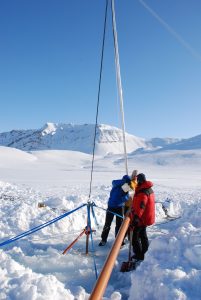Three Northern Arizona University professors are among the leaders of an international team to assemble and make available the most complete dataset looking at how temperatures on Earth have changed from 1 AD to the present.
This collection is significant because it allows climate scientists to study the patterns and causes of surface temperature more accurately than was previously possible, said Darrell Kaufman, Regents’ Professor in the School of Earth Sciences and Environmental Sustainability and third author on the paper, which was published July 11 in Nature Scientific Data.
“Our dataset is the most comprehensive collection of information on global temperature change over the past 1,000 to 2,000 years,” Kaufman said.
The international project was coordinated through Past Global Changes project (PAGES), a core project within Future Earth, a research initiative on global environmental change and global sustainability. Participants assembled proxy data from biological and geological sources that provide indirect information on past temperatures, such as tree rings, which can grow more during warmer years. This dataset includes proxy data from other sources like corals, glacier ice and marine and lake sediments. The database, called PAGES2k, gathers 692 records from 648 locations, with data sources covering all continents and oceans.

Assistant professor Nick McKay and assistant research professor Cody Routson, both in the School of Earth Sciences and Environmental Sustainability, also are authors on the project, along with 95 other researchers from throughout the world, including Germany, China, Italy, Australia, Tanzania, Kyrgyzstan, Estonia, Bhutan, the Democratic Republic of the Congo and others. The group of scientists realized the existing datasets were incomplete, including missing metadata that would allow scientists to reuse the data, which led to the worldwide project.
“The expanded database now includes records from the oceans for more complete global coverage as compared to previous work,” said McKay, who was the second author. “It also includes extensive documentation to facilitate the accurate reuse of the data. Furthermore, the selection criteria for the records included in this version were applied more uniformly and systematically across regions, resulting in a more cohesive global data product.”
The database will be available as open data, which allows anyone to download and use the information. Kaufman also wrote a blog for Nature further discussing the need for community-endorsed data products for climate research.



